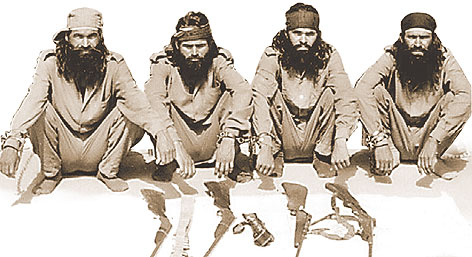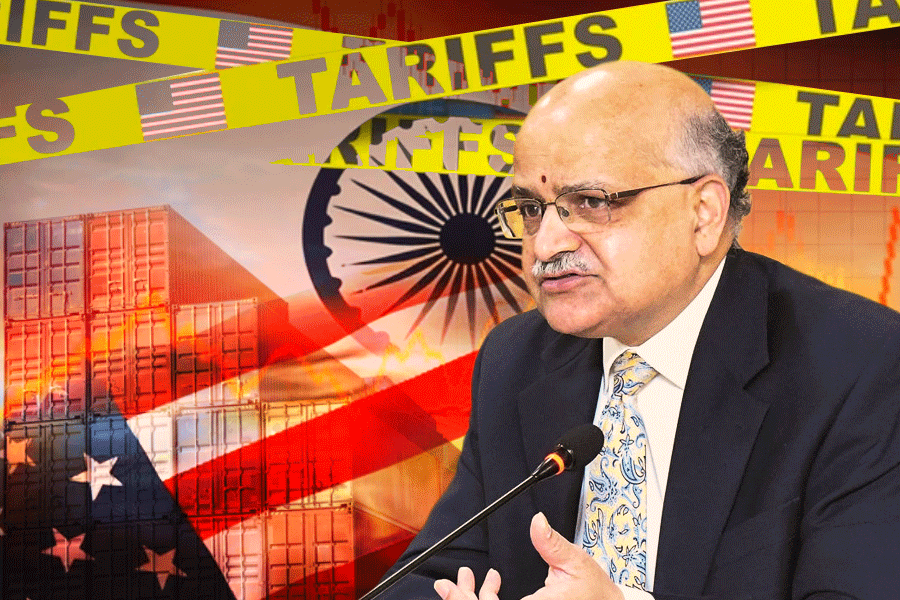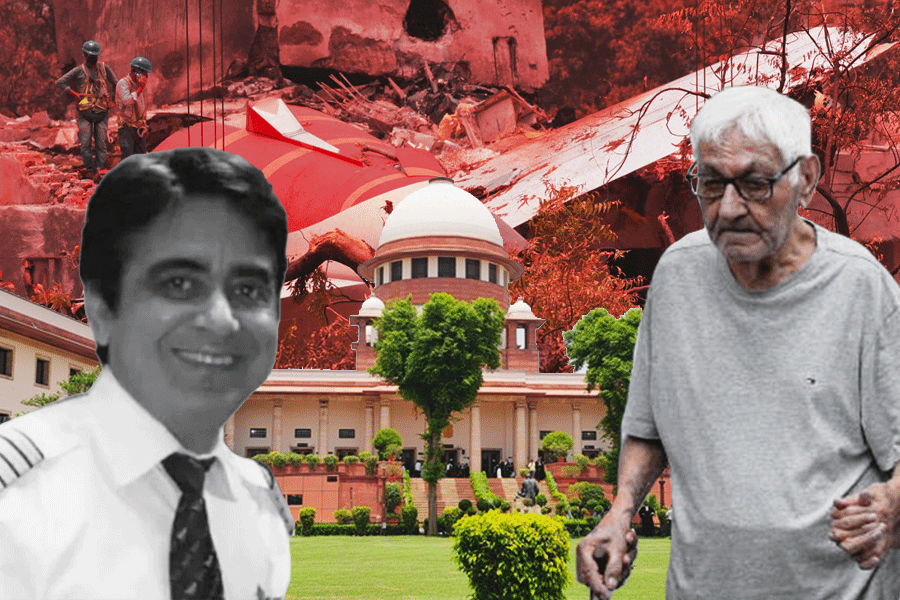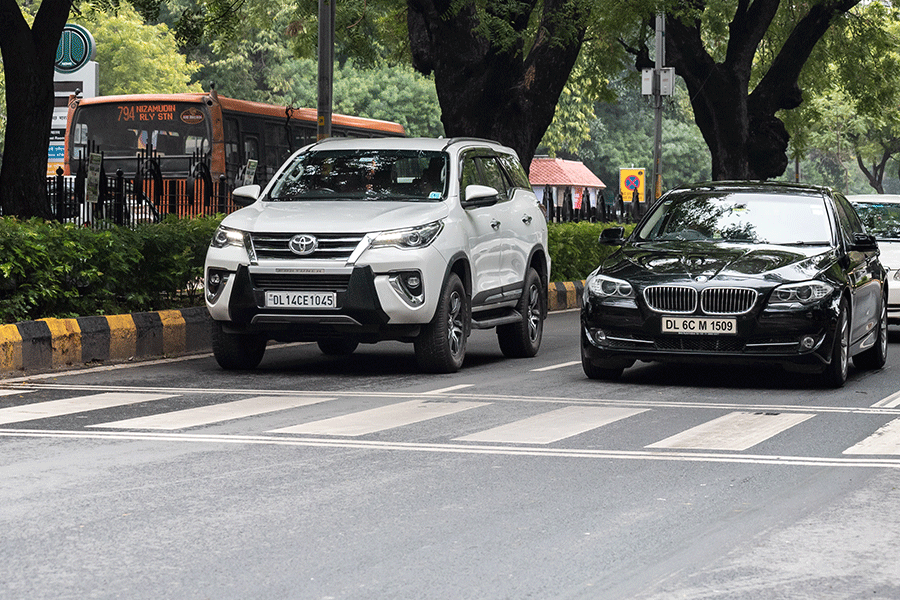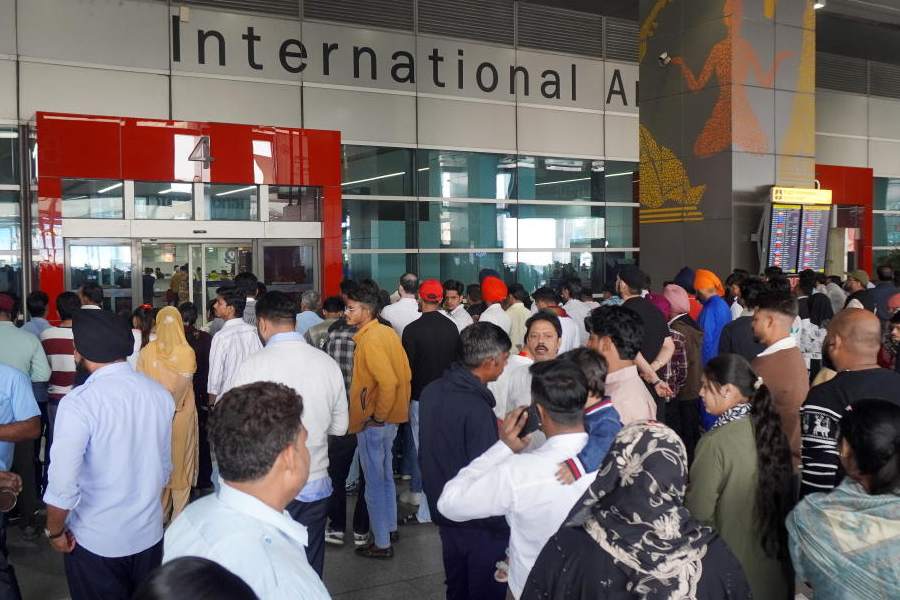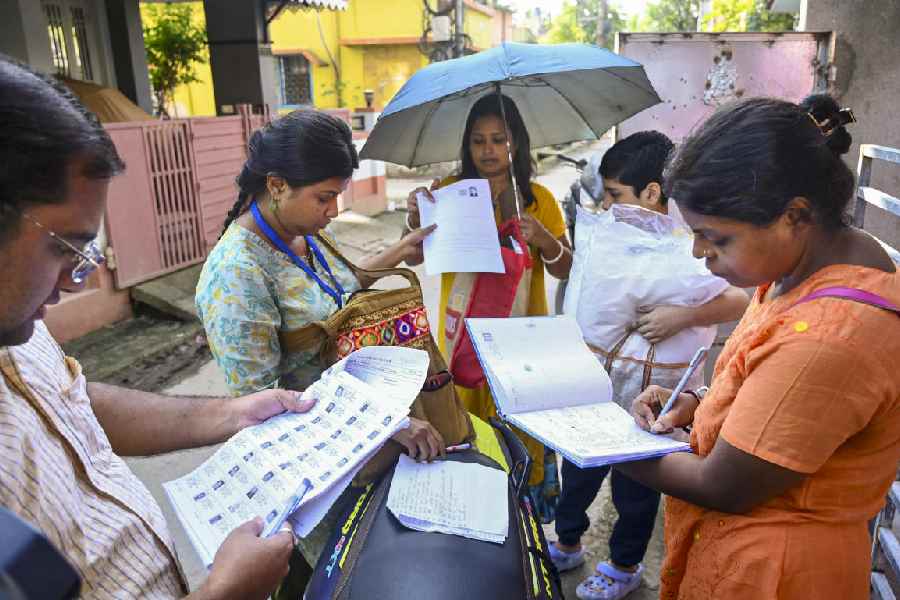 |
| ARMS AND THE MEN: Dacoits of the Dayaram-Rambabu Gadariya gang |
The terrain is treacherous. Carefully negotiating uncomfortable rivulets, hazardous rocks and harsh, thorny bushes, the Toyota Qualis snakes ahead. But the speed, or rather the lack of it, makes Rajinder Singh nervous. ?Why don?t you drive faster?? he tells the driver. It is not a request, but a command.
We are approaching the spot, four kilometres away from Bhanwarpura in Gwalior district, where the dreaded Gadariya gang of dacoits gunned down 13 villagers late last month. Two of them were Singh?s cousins. ?People talk about development and progress. But in these parts,? he says with a sad finality, ?nothing has changed?.
 |
Statistics show how, even after 57 years of Independence, the outlaws or baghis continue to rule the Chambal ravines and the forests nearby. Thirteen districts across Madhya Pradesh (MP), Uttar Pradesh and Rajasthan are affected by rural bandits. Six MP districts ? Gwalior, Shivpuri, Morena, Bhind, Datiya and Sheopur ? alone witnessed over 450 kidnappings in the past five years. And though about 400 dacoits have been killed over the last 15 years, the crime rate shows little signs of dipping.
And, the question which continues to haunt many is: why?
Part of the answer lies in the fact that the dacoits have adapted suitably to a changing world. Since villagers are better armed today, few raid hamlets as they did in the 1950s and earlier. The modus operandi of abduction has evolved as well. Outsourcing is the new name of the kidnapping game. The dacoits have developed a system under which agents do the pakad (local lingo for kidnapping) for as little as Rs 5,000. ?These casual members can be anybody: a neighbour or a relative,? says local journalist Rakesh Pathak. While the agents make policing more difficult, they lower the risk for a dacoit.
Extortion is another new hassle-free source of income in the badlands. The brigands rule the forests where illegal mining is rampant. ?To get their trucks through, contractors pay them off,? says Sanjay Rana, inspector general of police, Gwalior zone. Fish contractors of nearby rivers also pay up coercion money. The new millennium Chambal baghi has evolved into an urban criminal with a less risky and a more lucrative career than that of his predecessors.
The risk, says social activist Madhumas Chandra, further minimises when policemen and politicians lend a helping hand. Bandit Nirbhay Singh Gujjar, who operates in the Etawah-Bhind area, is said to be patronised by a top political party. ?Dacoity is an industry. All three play a part in sustaining it,? he says. Several thanedaars, admits a senior police officer, shelter a dacoit on the condition that he will commit crimes outside his jurisdiction.
| Bandit KINGS |
| Dayaram-Rambabu Gadariya: Nirbhay Gujjar: Rajjan Gujjar: Pahalwan Gujjar: Hajrat Rawat: |
The alleged connivance has several forms. Back in March, 2001, the Gadariya gang escaped from police custody under suspicious circumstances. Responding to a public interest litigation earlier this week, the High Court in Gwalior ordered a Central Bureau of Investigation inquiry into the 2001 incident.
Senior police officers acknowledge that the key to nabbing the dacoits lies in developing a network of informers. But, the lawmen also confess that they have failed to protect them. Pran Singh Baghel, who helped police finish off a top Gadariya gang member and was rewarded with a job in the force, was killed. ?Why would an informer risk his life then?? asks a police officer.
The outlaws know fear is a key that opens up any door. In Dabra tehsil, the Gadariya gang has issued letters asking candidates to withdraw from the forthcoming municipal elections. Back in the 1960s, it was different story, though. ?Unlike these new guys, we were neither interested in politics or the politician,? says Mohar Singh, a dreaded dacoit who surrendered in 1972.
What remains unchanged since the 19th century when the bandits first emerged in these parts is a firm belief in the maxim ? Jaako bairi jinda hai, taako jeeno dhikkar (your life is meaningless if your enemy is alive). The gun is routinely used to settle scores. Driving from Gwalior to Bhind, the gun culture is evident. Every third motorcycle rider has a pillion-rider sporting a gun. Bhind has over 80 gun shops. The district has over 25,000 licensed gunowners. ?If you include the unlicensed ones the number crosses 50,000,? says a police officer.
The area around Bhind and Gwalior has been traditionally hostile to authority. During the Mughal period, outlaws looted the government treasury. The later generations looted the rich, acquiring a Robin Hood image. Slowly the six lakh acres of Chambal ravines and the jungles of Shivpuri and Gwalior became a haven for anyone walking the wild side. As former MP chief minister Digvijay Singh says, ?the inhospitable terrain is the baghi?s biggest ally?.
Rana recalls a 1994 incident when he was the Bhind superintendent of police. Tipped off that the notorious Hari Baba gang was expected in a village, he surrounded it with a posse of policemen. But the gang came to know and started firing. The policemen went in pursuit but the dacoits managed to reach the ravines. ?Catching them became impossible. You have no idea where you are going in those labyrinthine hillocks. All of them escaped,? he says.
Such incidents only create a halo of invincibility around the outlaw. Says Rana: ?With a profusion of guns, a favourable topography and a mindset of settling scores, the region is trapped in a paradigm that has endured.?
What has altered radically is the caste configuration among bandits. In the 1950s and earlier, most gangs were led by thakurs and Brahmins. Since then, the upper caste has moved mainstream. Now they function as contractors and contest local elections. Today?s gangs are led by men of Other Backward Classes (OBCs): the Gadariyas, the Gujjars, the Kachis. As in politics, the OBC identity has been asserted in the ravines and the forests.
Caste identity works to the bandit?s advantage. A baghi is a hero for his castemen because he brings the caste to prominence. And because he never kidnaps his own fellow men. ?Every dacoit has a support system based on caste. It keeps them ahead of the police,? says Pathak, who edits the daily, Nav Bharat.
The new dacoits are also technology-adept. They carry sten guns and cellphones. And they confidently hand over their mobile numbers to journalists. This reporter easily procured the cellphone number of four gang leaders (Nirbhay Gujjar, Rajjan Gujjar, Arvind Gujjar and Pahalwan Gujjar).
Post-Bhanwarpura, they have been switched off, though.
Unlike his predecessor, the new-millennium outlaw has little respect for women and is ruthless with his victims. The Rajjan Gujjar gang indulges in sadistic activities with its captives, say former victims. K.K. Dubey, who encountered a gang of dacoits in the 1960s, recalls that the earlier bandits were more civilised.
 |
| Torn apart: A widow mourns the death of her husband killed in Bhanwarpura. Photo: Rajesh Kumar |
Dubey, now a retired principal, was picnicking near Shivpuri with students when they were rounded up by the Madho Singh gang. ?He first told the girls, we will do you no harm. He was gentle but firm,? recalls Dubey. The dacoits took eight students away. ?Most of them were wearing terylene shirts which was a rage among the prosperous those days,? says Dubey, who was excluded. The victims were freed only after coughing up Rs 5,000 each, a staggering amount then.
Over the decades, despite several hundred dacoits surrendering before the law, banditry in its new avatar continues unabated. However, the Bhanwarpura massacre, the largest killing since 1961 in MP, has stung the police into action. Armed with light machine guns and satellite trackers, a 200-member task force is combing the jungles of Gwalior.
Away in the village, the government has distributed gun licences. Rajinder Singh, who lost his relatives in the killing, is waiting for the Rs 1 lakh ex-gratia payment. So are others in Bhanwarpura. All want to buy guns to protect themselves. But some day, someone might turn it against a fellow villager. That?s how the cycle of violence continues around the ravines and the jungles of central India.

